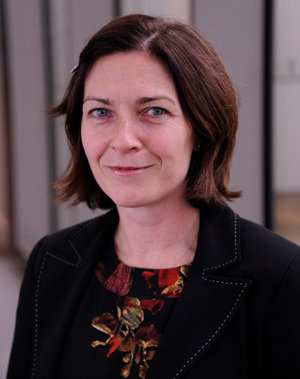The Wellcome Sanger Institute aims to tackle some of the most difficult challenges in genomic research. This demands science at scale alongside a creative approach to research that pushes the boundaries of scientific understanding.
Sanger’s scientific niche is in large-scale, high-throughput biology, often incorporating systematic genome-wide screens. These are enabled by major data generation platforms in DNA sequencing, and genetics with an accompanying large IT platform supporting computational data analysis.
An overarching theme of the centre’s science is genome variation; naturally occurring and engineered, inherited and somatic; explored in human beings, pathogenic micro-organisms, human cells and mice.
The Wellcome Sanger Institute’s Associate director Julia Wilson describes the history of the institute, which highlights the research goals at Sanger which adapt and evolve over time to constantly push the boundaries of scientists’ understanding of genomics.
‘The history, in a nutshell, was that Sanger was established to sequence that first human genome. That took ten years and cost millions of pounds,’ said Wilson. ‘We needed to then be able to understand the information in the human genome, map it to health and disease, so scientists can compare between populations.
‘Since then, Sanger has been studying the biology of genomes – the DNA code. Everything we do at the Sanger Institute involves understanding genome sequences and applying them to improve human health or increase the understanding of the living world,’ added Wilson. ‘Our mission is to advance understanding of biology and to improve health. Everything we do is about genomics so that runs through all of our science.’
Pushing the boundaries
One of the mandates or hallmarks of scientific research at Sanger is the constant drive to break new ground. Pushing the boundaries of understanding in genomics requires that the focus must frequently shift, as the understanding of a certain topic becomes more ubiquitous.
‘When the rest of the world can do what we do, then we need to change direction – we should always be breaking new ground in genomics,’ said Wilson. ‘That means we are at the leading edge of technologies but also thinking about where genomics can take us. In that sense, it is quite a fundamental research organisation.’
The current research programmes at Sanger are split into five distinct fields; Cancer, Ageing and Somatic Mutation, Cellular Genetics, Human Genetics, Parasites and Microbes and the Tree of Life.
All of these projects are research at scale, producing vast amounts of data which must be analysed. ‘Our DNA sequencing machines generate vast amounts of data, which needs to be interrogated and interpreted to generate findings,’ added Wilson.
Two of the largest projects being run are the Human Cell Atlas (HCA) and the Tree of Life. The Cellular Genetics programme jointly leads the HCA global consortium alongside the Broad Institute. The HCA vision is to create comprehensive reference maps of all human cells – the 37 trillion fundamental units of life – as a basis for understanding human health and diagnosing, monitoring and treating disease.
The Tree of Life investigates the diversity of complex organisms (eukaryotes) through sequencing and cellular technologies. Sanger generates and uses high-quality genome sequences to explore the evolution of life, provide the raw materials for new biotechnology and deliver tools and understanding for biodiversity conservation. This project aims to sequence approximately 60,000 Eukaryotic organisms.
However while these ‘juggernaut’ projects may take five to ten years to complete, ‘the programmes adapt and change to find new challenges and break new ground in genomics. Some have evolved. The cancer programme was previously focused purely on looking at genes associated with cancer,’ said Wilson
‘Now everybody can do that and as it has been implemented into genomic medicine, we no longer need to make the associations between genes and cancer. The programme evolved to look at the ageing process and the links between cancer and ageing, and to take a closer look at what we call mutational signatures.
‘That is an example of where the programme has evolved, because to remain at the leading edge we have had to pivot and change direction. There have been many examples of this over the organisations history.
‘We get funded in five year tranches, so we can take on projects that may last five years, ten years or beyond. We can take on those riskier projects,’ added Wilson. ‘There is always that push to adapt and evolve and take on some of the biggest scientific challenges. It is a mixture of the technology and the ambition and evolution to remain right at the cutting edge.’
However these large-scale projects do not come without their own challenges. For Sanger this can mean working to develop new methods or tools that can support genomics at an unprecedented scale.
‘Another hallmark of Sanger science is that because we are a core-funded institute, we invest in this vast scientific infrastructure. We have got one of the largest fleets of DNA sequencing machines, definitely the largest in Europe but one of the largest concentrations of that technology in the world. We have to be applying it to projects that only we can do – like sequencing all of life in the UK, or looking at 37 trillion cells in the human body,’ said Wilson.
‘A huge amount of our budget goes on kit and consumables, but also teams of real deep-domain technical experts that run these pipelines. We have got expert, skilled technical staff running the DNA pipelines. Some of these are trained at PhD level and beyond but they are driven by working in team science to deliver something that is greater than the sum of the parts,’ added Wilson.
Open science
Sanger is known for developing tools and software and releasing data and other resources that are made freely available to the scientific community.
This means that other organisations can pick up these resources and carry on the work, taking it in interesting directions as Sanger shifts focus.
‘Everything we produce is made freely available to the scientific community with the expectation that we want others to take that data and those tools and build on our discoveries. We cannot follow all of the leads from the data that we generate, so we want that data to be used by others,’ said Wilson.
She also noted that this focus on open science was adopted at the start of the Sanger Institute. ‘This happened at the very outset, when genomics was a new thing and our founding director John Sulston was working on that first genome at the time. It was mandated this data should be released in real-time for humanity to benefit,’ added Wilson.
‘International parties who contributed to that first genome signed up to these principles and historically it used to be released each day. There was a ticker tape above reception and the genomic data would go across as it would come off the machine. Obviously we cannot do that anymore because the data has increased by so much, but genomics was founded on open data.
Wilson stressed that this drive for open data is necessary in genomics research, because a single genome is of very little use. ‘If they are all locked up in individual labs, then none can benefit from this,’ Wilson said.
‘It is a principle of Wellcome funding as well. Wellcome, as a funder, has been so influential, and that ethos of open science has filtered through Sanger since it has been open,’ Wilson said.

Julia Wilson is associate director of the Wellcome Sanger Institute.


